Indonesia is the world’s second-largest seaweed producer, accounting for 38% of global supply. However, less than 1% of its available seaweed farming area is cultivated. This untapped potential is hindered by challenges such as limited access to high-quality seedlings, poor cultivation practices, and a lack of knowledge on value-added seaweed products (VAPs).
To unlock this opportunity while protecting the environment,, Kopernik and YASI.ID are implementing a one-year initiative titled “Building Blue Economy to Empower Osi Island Seaweed Farmers.” The term blue economy refers to an approach that promotes sustainable use of ocean resources for economic growth and livelihoods while preserving marine ecosystems, a critical balance in an era of rising climate and biodiversity crises. The project focuses on sustainable innovations–such as IoT-powered solar dryers (Internet of things), waste management, and seaweed VAP training–to empower local seaweed farmers while promoting social, economic, and marine conservation in Osi Island, Maluku.
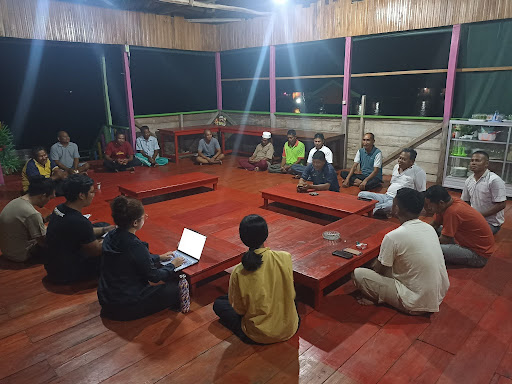
FGDs sessions with seaweed farmers, youth and women’s groups were conducted in January 2025.
In January 2025, the team visited Osi Island to gather baseline data through interviews, focus group discussions (FGDs), and onsite observations with men, women, and youth. During the visit, the team explored current seaweed cultivation practices, economic potential, challenges faced by the community and their aspirations for the future.
Seaweed farming
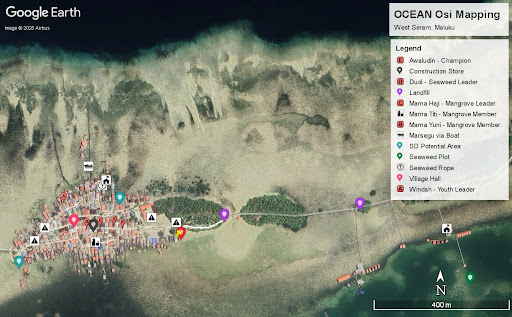
Osi Island mapping
The Osi Island area consists of three islands connected by a wooden bridge. The main island is densely populated, with a mix of semi-permanent stilt houses and concrete homes situated alongside seaweed and fisheries infrastructure. During our visit, we met with a local aggregator and seaweed farmers to understand their current practices.
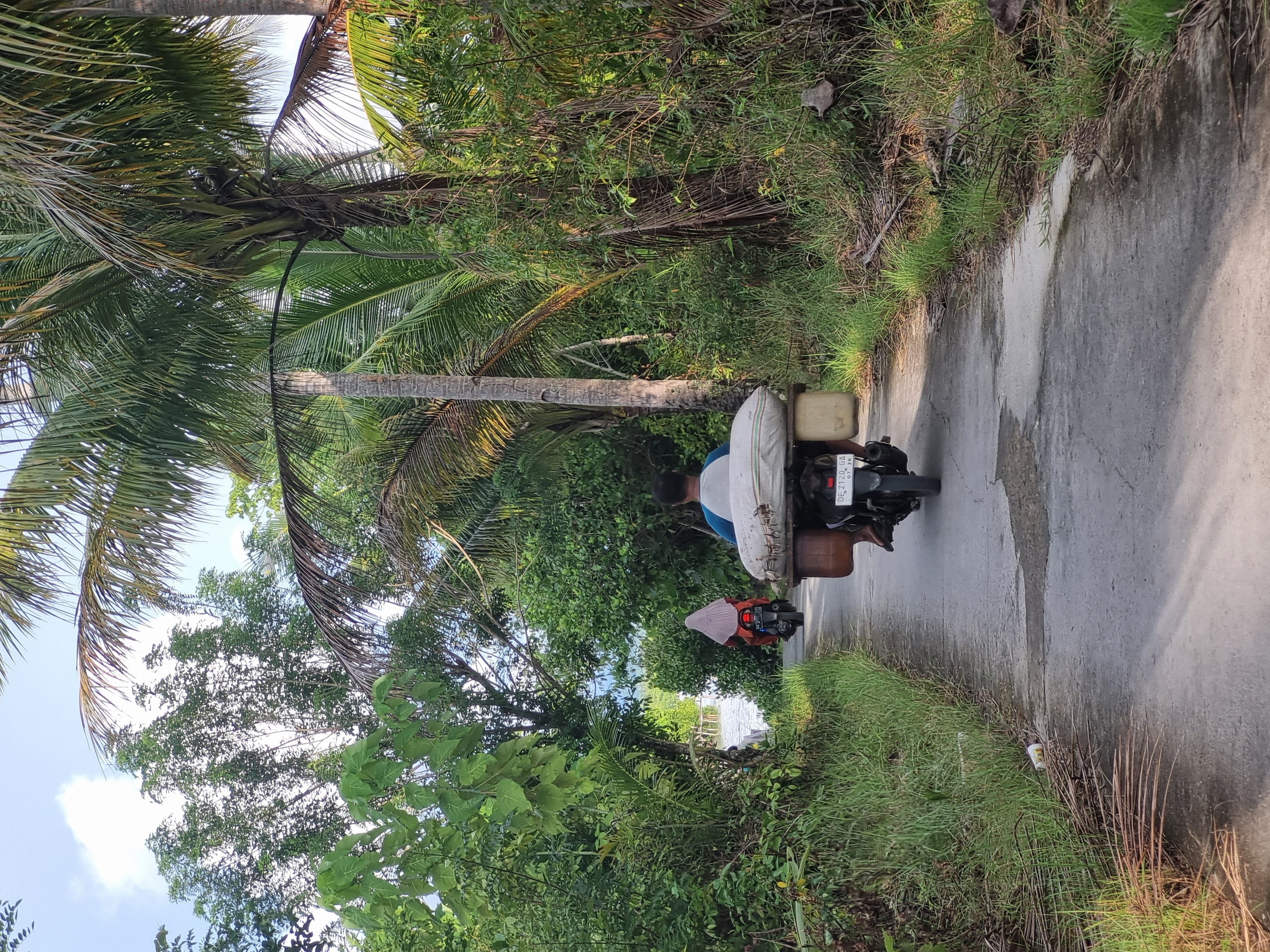
Local aggregator delivering dried seaweed to a potential buyer outside of Osi Island
Seaweed cultivation on Osi Island has been established for nearly two decades. At its peak, the island produced up to 100 tons of dried seaweed, with farmers earning up to IDR 2 billion, driven by fluctuating prices ranging from IDR 9,000 to IDR 42,000 per kilogram. Farming is largely a family-based activity, with husbands primarily responsible for planting and wives helping with cleaning, maintenance, and harvesting.
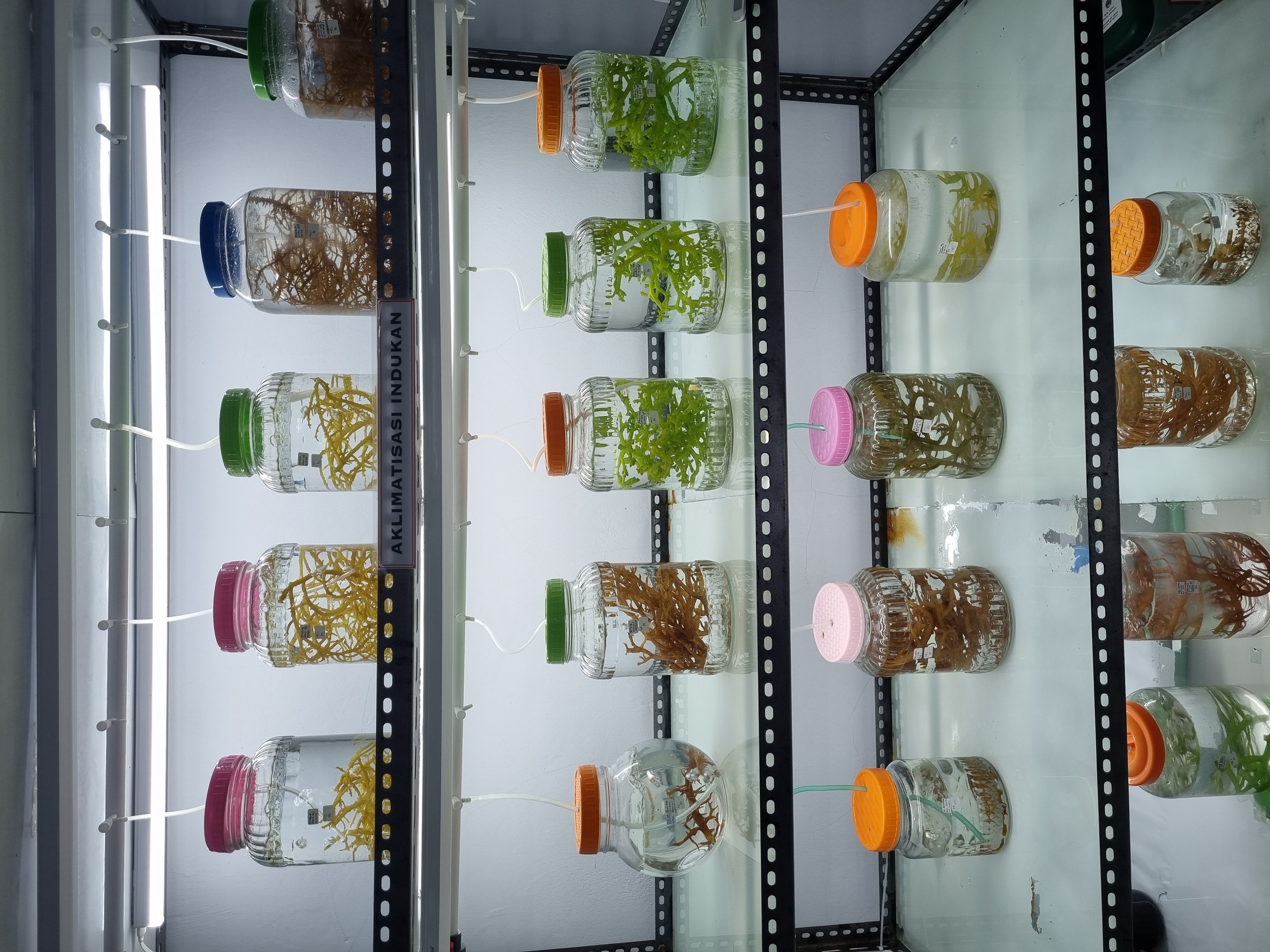
Production of tissue-cultured seedlings at BPBL Maluku
Farmers typically procure seedlings from other regions in Maluku, such as Taliabu, Tual, and Baubau, at an average cost of IDR 5,000 per kilogram. They previously received lab-grown seedlings from the Ambon Marine Fisheries and Aquaculture Center (BPBL), though this raised concerns among farmers after reports of poor harvests from nearby islands.
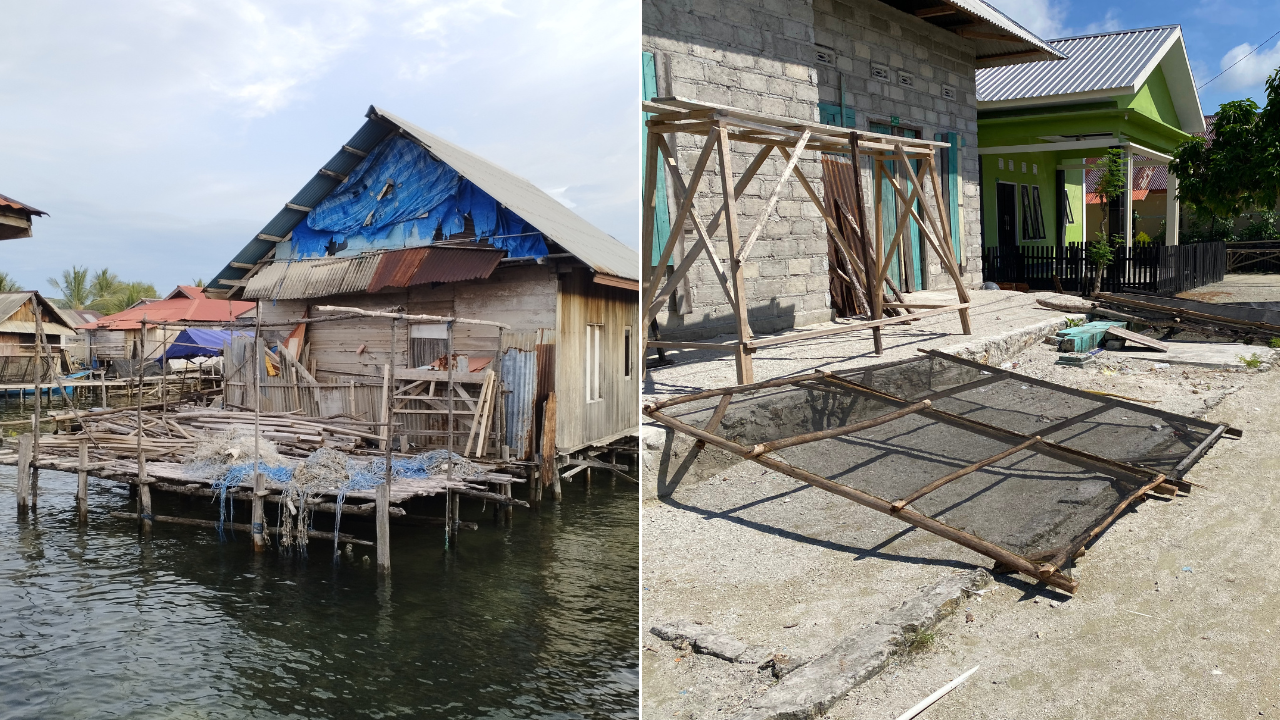
Example of a traditional seaweed dryer location, namely “para-para” usually used by Osi Island seaweed farmers
Over the past two years, seaweed harvests have declined due to factors such as epiphytism disease, water pollution from potassium cyanide used in illegal fishing, and turtle disturbances, locally known as “parasites.” Despite these challenges, farmers have demonstrated resilience and innovation. They once attempted to create their own seedling nursery, which was halted due to a disease outbreak. After a mini tsunami in 2008, farmers shifted from bamboo rafts to long-line cultivation. Farmers also expressed concerns about unpredictable weather affecting the drying process and showed interest in exploring new drying technologies.
The farmers' openness to innovation highlights their commitment to sustaining their livelihoods and adapting to changing conditions.
Women-led communities
During the FGD with the women (mama-mama), we engaged with three community groups: Mina Mangrove Lestari, a soap-making group, and a fish cracker-making group.
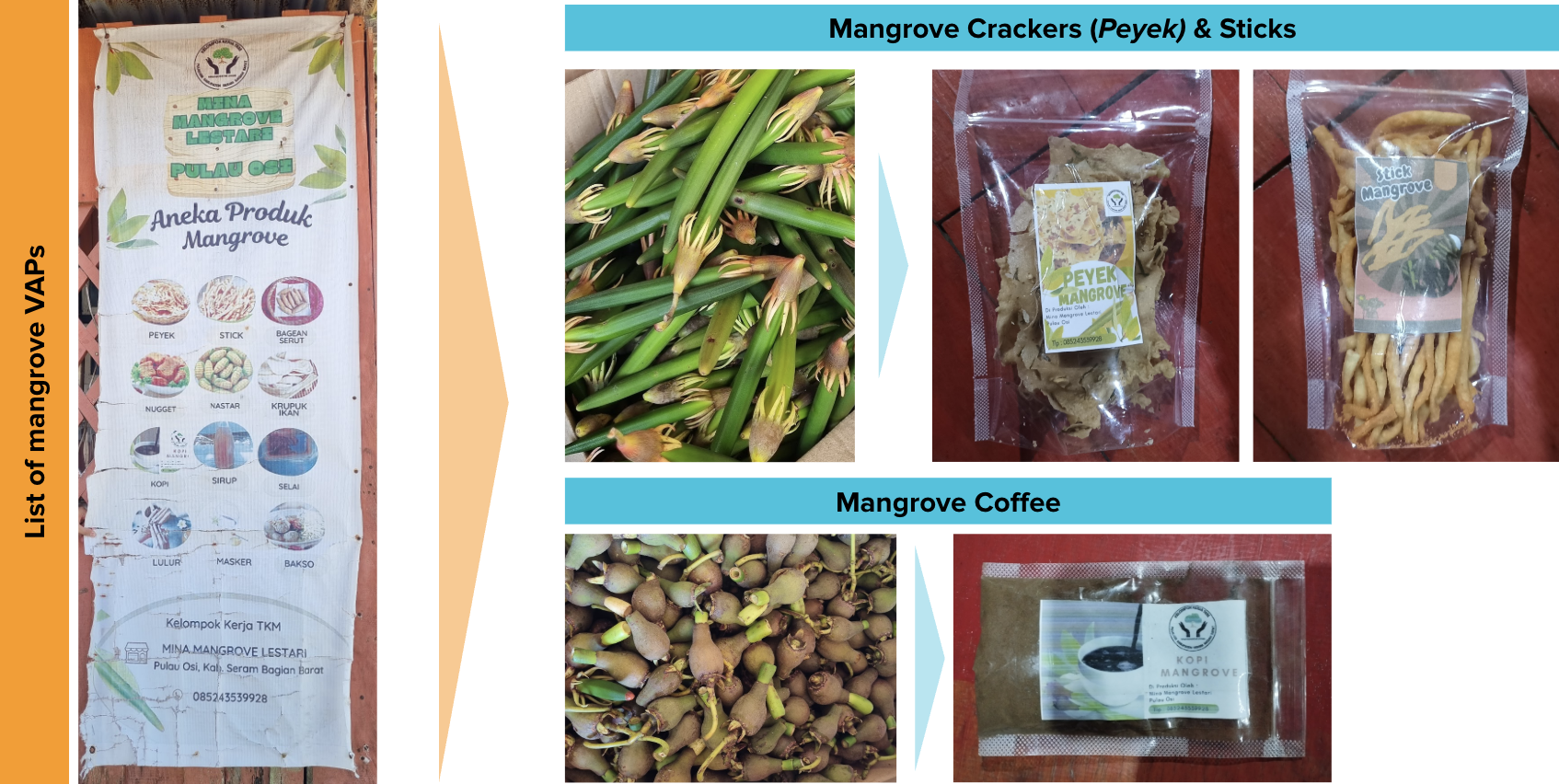
Mangrove-based VAPs developed by the Mina Mangrove Lestari group
Mina Mangrove Lestari consists of 15 members who produce VAPs from Osi’s abundant mangroves. In 2022, they received five days of training from the Ministry of Villages and Development of Disadvantaged Regions, followed by equipment support from the Regional Fisheries Agency. Since 2023, they’ve received promotional and sales support from the Regional Tourism Office through bazaars and government events. As one of the more developed groups, they have a member dedicated to administrative and financial tasks. Their products include snacks, coffee, skincare items, and meatballs.
The soap makers group, originally consisting of 10-15 members, received training from an individual consultant to support community livelihoods. They previously sold products through a relative working at a resort in Raja Ampat. However, production has paused due to difficulty sourcing materials and a lack of funds.
The fish cracker group started with a woman who moved to the village after marrying a local resident. Her hobby of making fish crackers gained interest from neighbors, and she taught them the craft. The group now consists of four members.
When discussing seaweed farming, the women shared how they alternate with their husbands to monitor and clean the seaweed. Challenges include declining seaweed quality due to disease and hand rashes from prolonged work. Some dried seaweed remains in storage at home, prompting a discussion about their interest in seaweed-based VAPs as a potential source of income during the off-harvest season. They expressed enthusiasm for learning how to make skincare products, crackers, and ready-to-eat products that could become unique selling points for Osi Island.
Involvement of youth
Two youth communities were present during our visit: the Osi Island Student and Youth Association (IPMAPS) and the Youth Association. At the moment, both are mainly active during ceremonial events.
Out of the 33 youth who participated in the FGD, most were already familiar with seaweed cultivation and understood the importance of effective waste management. IPMAPS had previously been involved in a YASI.ID program in 2022, where they helped construct and maintain a solar dryer. However, due to its poor location, recurring damage to the structure, and a lack of consistent monitoring, the solar dryer was eventually dismantled.
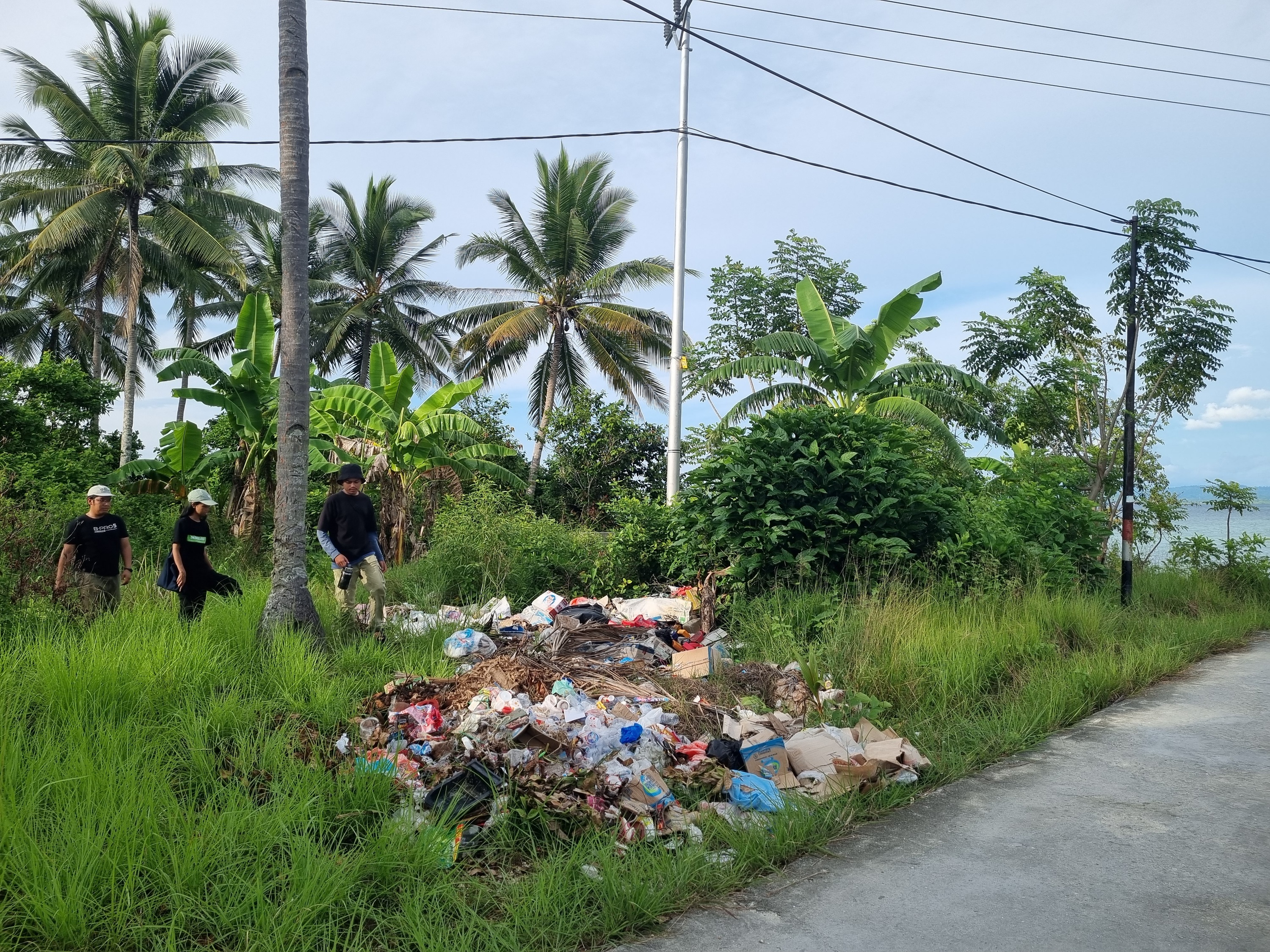
Unmanaged waste sites on Osi Island, highlighting the lack of proper waste infrastructure
Back in 2018, both IPMAPS and the Youth Association had also received training on waste management from an external facilitator. They learned about waste classification, the dangers of unmanaged waste, and the impact of open dumping in the sea. During that time, they collaborated with women’s groups to explore upcycling—turning waste into ecobricks, flower pots, shopping baskets, and purses.
These past experiences affirm our early idea: that youth can play a key role in building and maintaining an IoT-powered solar dryer, as well as co-designing a context-appropriate waste management training tailored to the needs of Osi Island.
Next Steps
As part of the implementation phase, we met with several government agencies, including the Maluku Fisheries Agency (DKP Maluku), Ambon Marine Fisheries and Aquaculture Center (BPBL Ambon), Maluku Natural Resources Conservation Agency (BKSDA Maluku), and the Ambon Fisheries Agency (DKP Ambon). We were warmly welcomed and encouraged by their interest in our upcoming activities.
Moving forward, our team is working closely with the farmers in Osi Island. We're currently focusing on purchasing seedlings, designing seaweed-related experiments, and developing training modules on waste management and seaweed VAPs, all of which will be rolled out throughout 2025.
This project is a grant recipient of the Ocean Community Empowerment and Nature Programme, funded by UK International Development.


